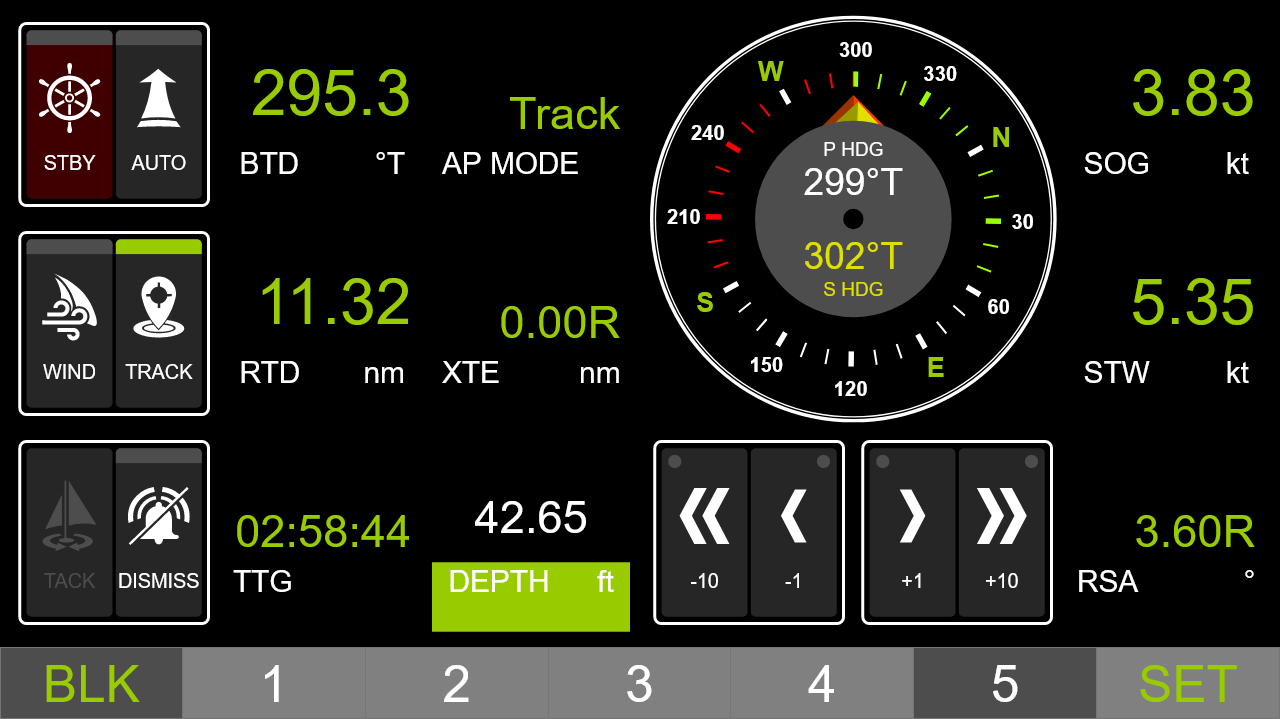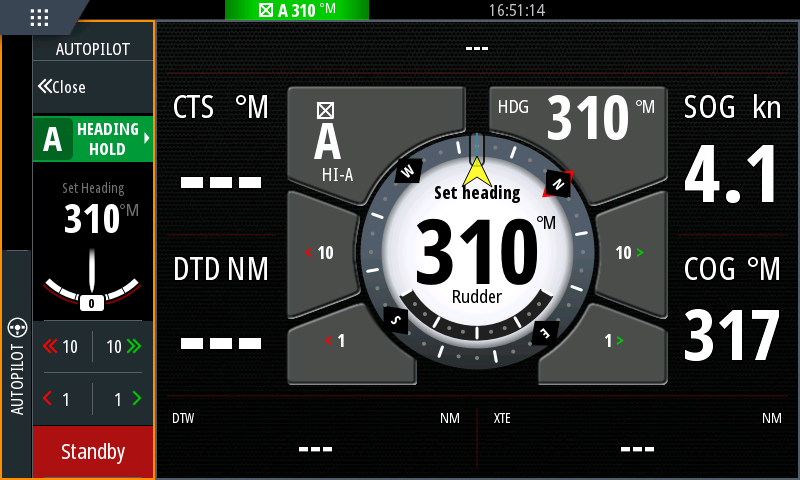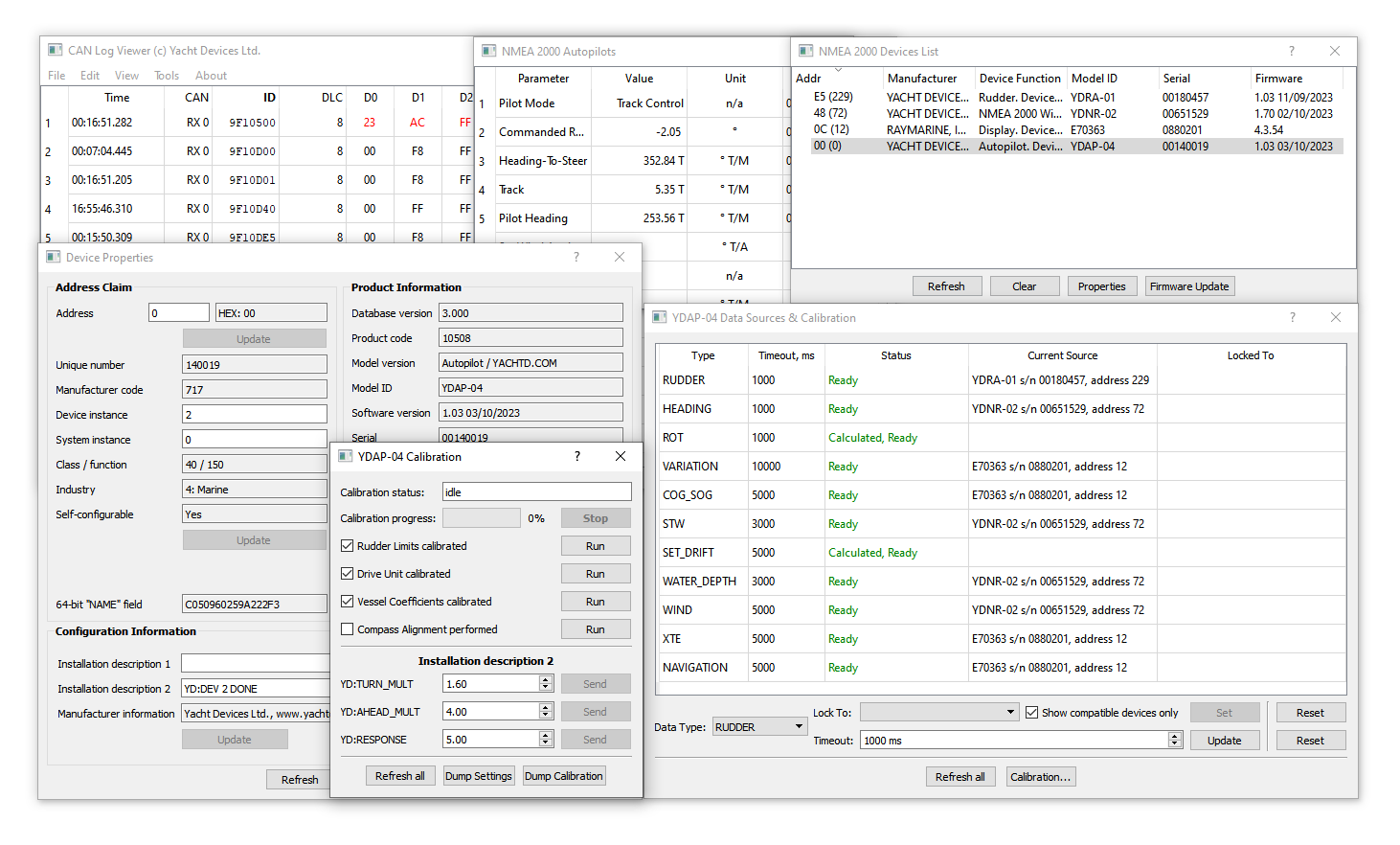


Yacht Devices Autopilot YDAP-04
Dimensions
PRODUCT INFORMATION
CONVERSION OPTIONS
SAFETY AND COMPLIANCE
Choose options



Yacht Devices Autopilot YDAP-04
Sale price$104.99
Regular price





The Autopilot is a course computer and actuator control unit in a single housing. It can control vessels up to 40" and 12 tonnes displacement. It can control a hydraulic pump or a reversible linear drive with electric clutch, providing 10A maximum continuous current (16A peak) and 12/24 volt supply.
For minimal installation, apart from the drive, you will also need the NMEA 2000 network or SeaTalk NG network with the heading sensor and rudder angle sensor. In the simplest case, the Autopilot can be controlled with five (or even two, STANDBY and AUTO) buttons connected to its terminals. Feedback from the Autopilot can be obtained using internal LEDs and external LEDs and buzzer connected to the unit's terminals. We do not yet offer finished control panels, so you can make your own using the design and buttons you like.
Figure 1. Autopilot YDAP-04, buttons side
The Autopilot supports AUTO, WIND and TRACK modes. To operate in WIND mode, the boat's network must include the wind sensor. For TRACK mode, you need a GPS and chartplotter on the NMEA 2000 network, or navigation software on a PC or mobile connected to the NMEA 2000 network via the gateway.

Figure 2. Autopilot page of Web Gauges
If you have a NMEA 2000 Wi-Fi Gateway or Router, or an Ethernet Gateway from Yacht Devices, you can also manage the Autopilot from the Web Gauges using the web browser on your PC or mobile device. So, if you are not afraid of drowning your phone, you can have the remote control for your Autopilot at no extra cost. With these devices, you can also use the CAN Log Viewer software to view the Autopilot's internal settings, easily tune it and update the Autopilot's firmware.

Figure 3. Simrad MFD works with our Autopilot
With an unbeatable price and rich functionality, we are sure that YDAP-04 is a good choice for upgrading existing systems and for new installations on small and medium sized vessels. The only thing we cannot offer against our well-known and respected competitors is a dedicated display to control our Autopilot. Instead, we are working on supporting 3rd party displays. Currently we have support for Navico (Simrad, B&G, Lowrance) and Raymarine displays.
In addition, the Autopilot is compatible with Raymarine SeaTalk NG pilot heads, such as the Raymarine ST70, and can be used to replace older autopilots such as the SmartPilot SPX 30.
You can also control the autopilot from any modern MFD using the CZone protocol. You can download the CZone configuration file for your chartplotter from this page. And of course, the autopilot has "virtual buttons" exposed as a NMEA 2000 binary switch bank, allowing additional control to be organized via NMEA 2000 using the Switch Control YDSC-04 or other compatible product.

Figure 4. Commissioning with CAN Log Viewer
The basic calibration and commissioning procedures can be carried out using the buttons connected to the device terminals. In addition, for finer tuning and turning on/off experimental features, you will need the NMEA 2000 gateway and software (from Actisense, Maretron, Yacht Devices, etc.) that allows you to enter NMEA 2000 installation description strings. The most convenient way to install the Autopilot is to use our free CAN Log Viewer software for Mac, Windows and Linux, as it has dedicated windows for viewing and configuring the Autopilot settings, and also allows you to update the device's firmware.
Why is the Autopilot a good choice for you?
What problems can occur during installation and how to prepare for them:
Why has Yacht Devices developed the Autopilot when there are at least ten other brands on the market? The autopilot is a great thing, even on a small boat, and they want to offer a cost-effective product that is compatible with modern electronics and make it accessible to all boaters.
The Autopilot is certified by National Marine Electronics Association. The Device is designed for operation in an NMEA 2000 network and is compatible with a wide range of equipment supporting this protocol. For Raymarine SeaTalk NG, Simrad SimNet and Furuno CAN the adapter cable may be required.
Figure 5. Drawing of Yacht Devices Autopilot YDAP-04N
As your needs change - a child wants a new bed, or maybe a sibling arrives - the bed can keep up with the new needs.
Choose the bed you want to convert and see the conversion options in the bed converter.
We guarantee a five-year availability of the standard conversion kits for all convertible beds from the date of purchase.
Tested and approved according to safety standard EN 747-1:2012+A1:2015.
According to EN 747 loft beds and the upper bed of bunk beds are not suitable for children under 6 years due to the risk of injury from falls.
A smaller child can sleep in the lower bed of bunk beds, possibly with a bed guard for extra safety.
Choose options


